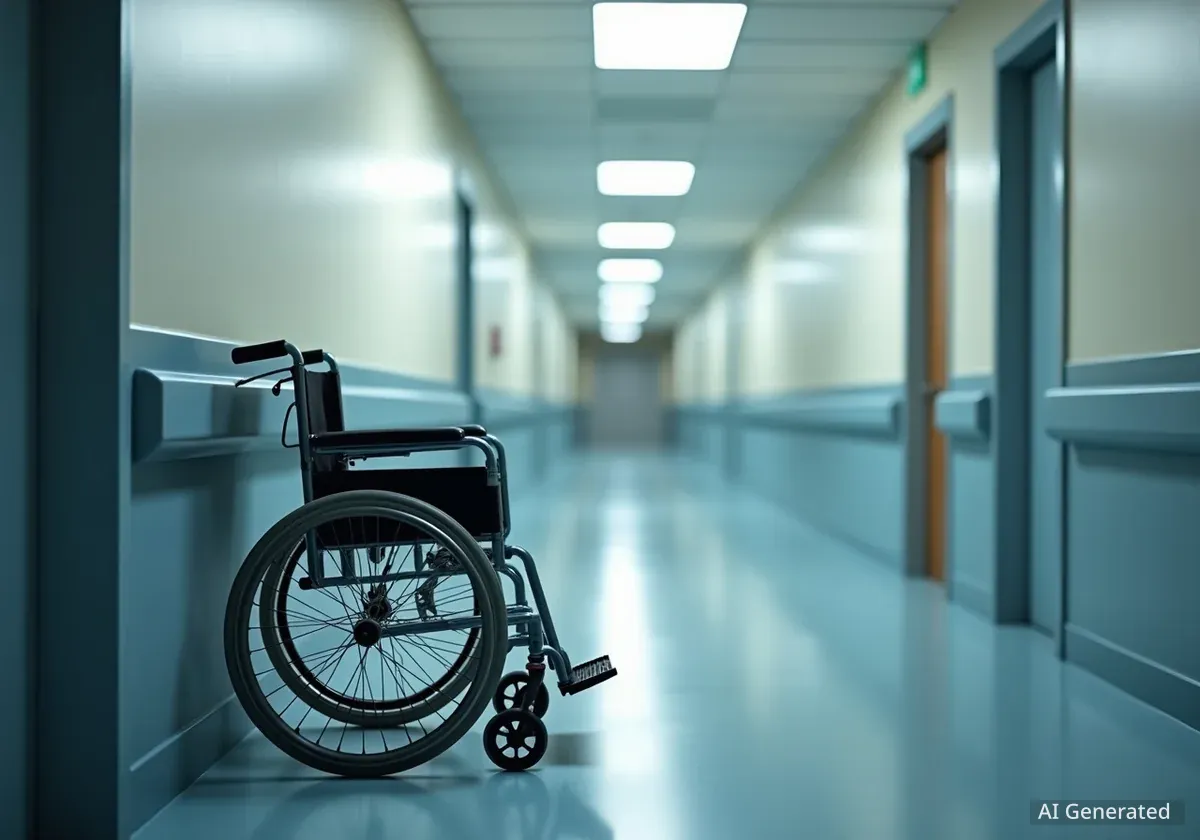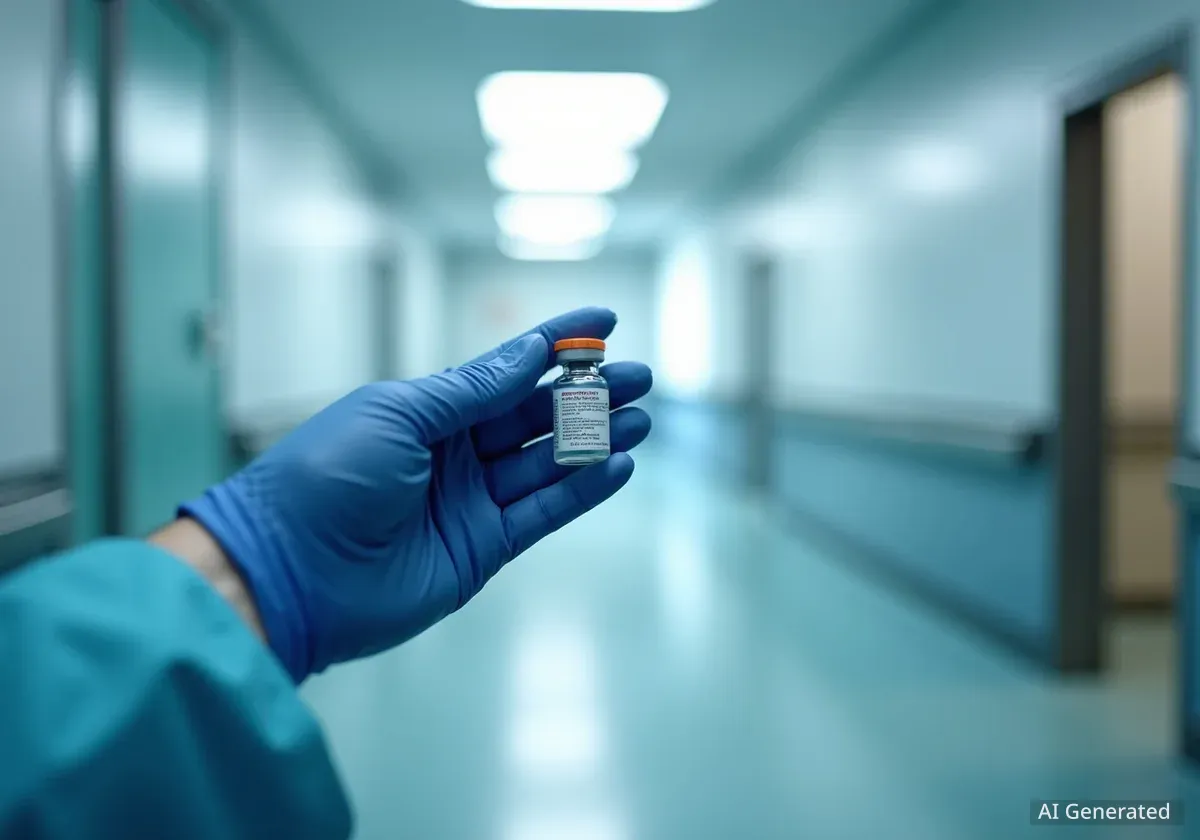An intensive care nurse from Merseyside who initially dismissed a persistent ache in her leg as a muscle injury has undergone an amputation after being diagnosed with an extremely rare form of bone cancer. Sophie Fay, 26, is now sharing her experience to raise awareness of the symptoms that can often be overlooked.
After months of escalating pain and swelling, a scan revealed a large tumour in her calf, identified as spindle cell sarcoma. Due to the tumour's complexity, an above-the-knee amputation was the only viable treatment. She is now recovering and adjusting to life with a prosthetic limb.
Key Takeaways
- Sophie Fay, a 26-year-old nurse, had her leg amputated after a rare bone cancer diagnosis.
- Initial symptoms, including an ache and swelling, were mistaken for a muscle injury.
- The diagnosis was spindle cell sarcoma, a rare tumour accounting for only 2-5% of primary bone cancers.
- She is working with the Bone Cancer Research Trust to raise awareness of the signs of bone cancer.
Initial Symptoms and Misdiagnosis
In March 2024, Sophie Fay began experiencing an aching pain behind her right knee. As she had recently started working with a personal trainer, she attributed the discomfort to a new exercise routine. "It would just happen when I exercised but I remember going for a walk and I thought the back of my knee was really sore," Sophie explained.
Over the following months, the pain did not subside. Instead, it grew progressively worse, affecting her even during simple activities like walking. By August 2024, more alarming symptoms appeared. Her right calf became noticeably swollen and was warm to the touch, and she developed a visible limp.
Seeking Medical Advice
Concerned colleagues on her intensive care ward pointed out the swelling, suggesting it could be a blood clot. An initial informal ultrasound at the hospital was inconclusive, leading her to the A&E department. There, medical staff suspected a muscular issue or a Baker's cyst—a fluid-filled sac behind the knee.
Sophie initially accepted this diagnosis, as the symptoms seemed to align. However, her condition continued to deteriorate. "I didn't really know any better at the time," she recalled. "I thought it could probably be muscular – what it ended up being was so far from my mind, it was unreal."
The Path to a Diagnosis
By November 2024, the pain in Sophie's leg had become constant, and she could no longer bend her knee properly. The swelling had also become severe. "My calf was massive," she said. "I think it measured six centimetres bigger than my other one."
Feeling that something was seriously wrong, she bypassed a physiotherapy referral and went to a walk-in health centre. This visit led to a full ultrasound and an urgent referral for more tests. On November 11, 2024, she underwent an MRI scan.
What is Spindle Cell Sarcoma?
Spindle cell sarcoma of the bone is an extremely rare type of primary bone cancer. According to the Bone Cancer Research Trust, it accounts for just 2-5% of all such cases. These tumours are more commonly found in patients over the age of 40, making Sophie's diagnosis at 26 particularly unusual. They are soft-tissue tumours that can grow within the bone.
The results came quickly. The next morning, she was called back to the hospital. "Oh no, this is soon," she remembered thinking. The scan revealed a large mass that occupied the entirety of her calf, which doctors suspected was primary bone cancer. "I just lost my head, there were all sorts of mad things going through my mind," Sophie said. "I couldn't help but think it was a death sentence."
Diagnosis and Life-Altering Surgery
Following the scan, Sophie was referred to The Robert Jones and Agnes Hunt Orthopaedic Hospital in Shropshire for specialist care. A biopsy was performed, and on November 29, 2024, she was officially diagnosed with spindle cell sarcoma of the bone.
Doctors explained that the tumour had completely encased the blood vessels and nerves in her lower leg. This meant that removing the tumour while preserving a functional limb was impossible. The only effective treatment option was an above-the-knee amputation.
"They showed me a picture of my scan, and the tumour takes up the entirety of my calf. There wasn't a way they could remove it safely to leave me with a functioning leg."
Faced with this reality, Sophie focused on the outcome. "It was a massive shock but it felt like the best chance of living a normal-ish life afterwards," she stated. "The only thing I wanted was to not have cancer anymore, and I thought once it's gone, I can deal with that." On December 17, 2024, she underwent the amputation.
Recovery and Raising Awareness
Sophie described her surgery and the immediate healing process as "very smooth." However, the journey of adapting to a prosthetic leg has been challenging. She found it exhausting to walk even short distances at first but remains optimistic about her progress.
Key Facts About Bone Cancer
- Primary bone cancer is a rare type of cancer that begins in the bones.
- Symptoms can include persistent bone pain, swelling, a noticeable lump, and weakened bones leading to fractures.
- It is most common in teenagers and young adults, but can occur at any age.
- Early diagnosis is crucial for successful treatment.
"It's comforting to know this is the hardest it will ever be," she said. "As time goes on, I'll get better prosthetic parts, a better socket and knee joint, things that will make it easier." She will now undergo scans every three months for the next two years to monitor for any recurrence of the cancer.
Now back at work in a non-clinical role, Sophie is using her story to support the Bone Cancer Research Trust's Bone Cancer Awareness Week, which runs from October 6 to 12. She hopes her experience will encourage both the public and healthcare professionals to be more aware of the signs of bone cancer.
"I think it was really easy to say I was a young girl who pulled a muscle while exercising – I even made that conclusion in my own head," she reflected. "It's very rare, but knowing what to look out for... would mean people like me don't fall through the cracks."
For more information on bone cancer, visit the Bone Cancer Research Trust at bcrt.org.uk.





